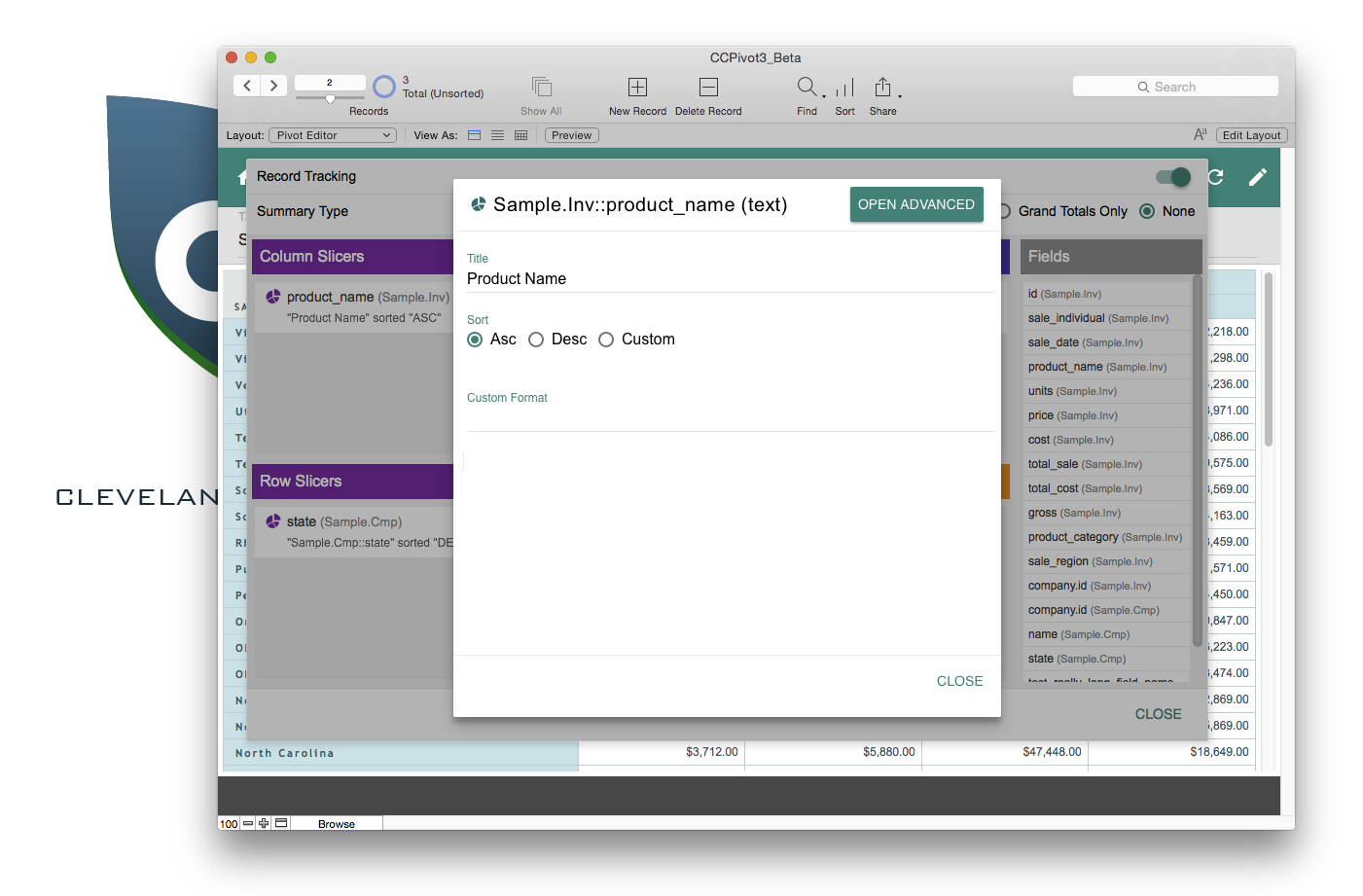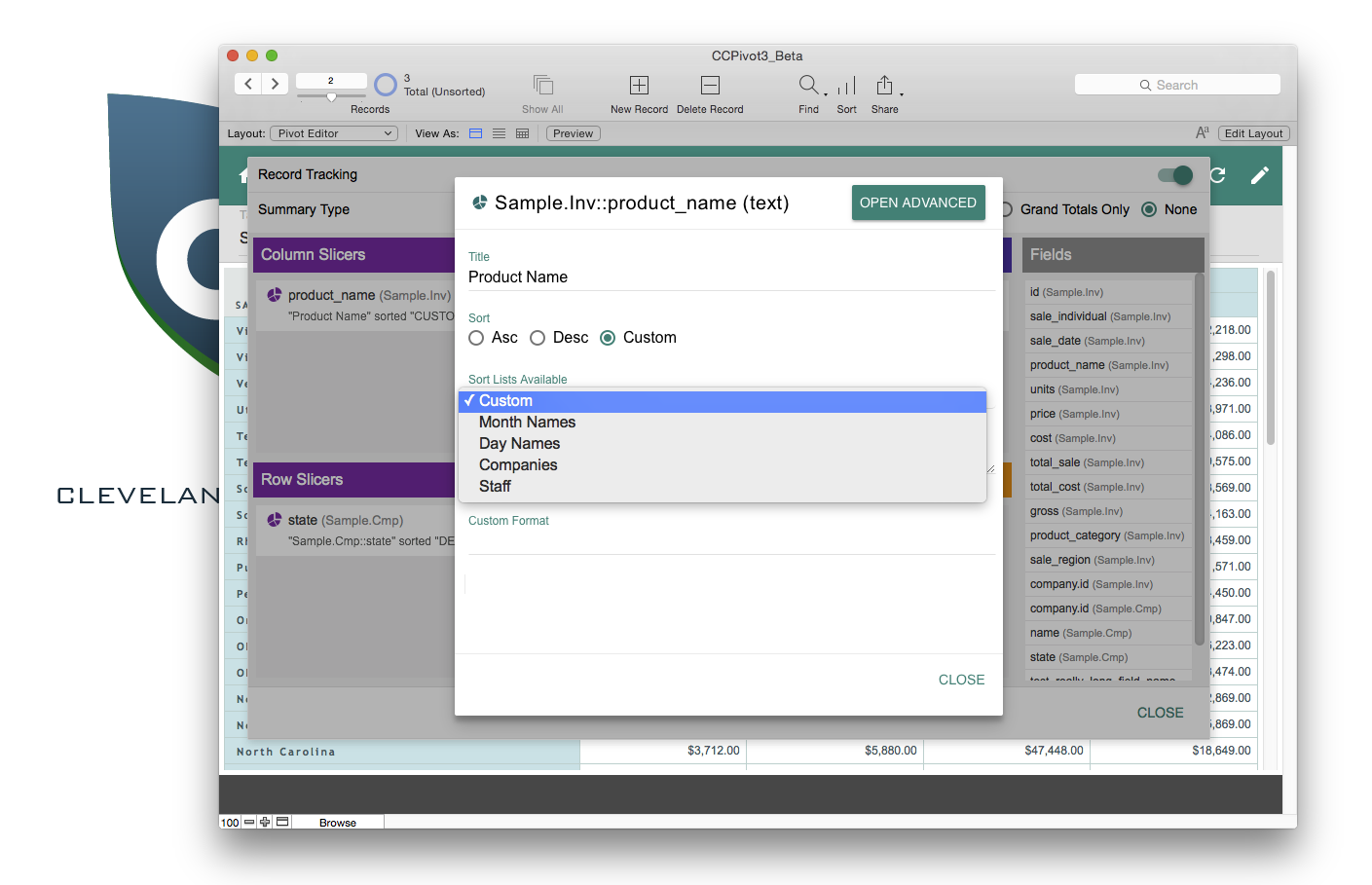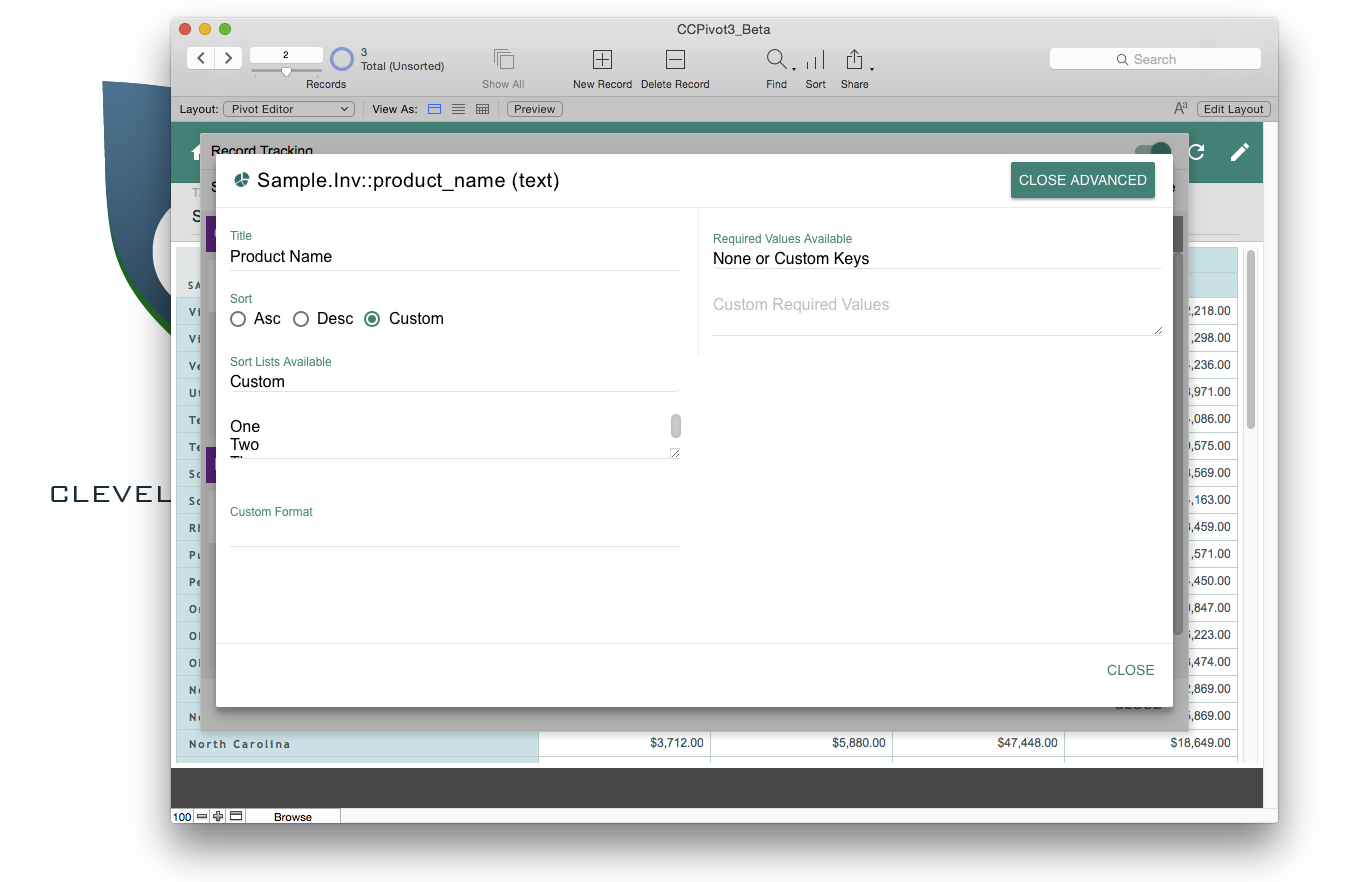¶ Slicer Detail Section
Once you have placed a field in one of the slicer areas and clicked it in the window below, the slicer data window will pop-up. Below is the screenshot, and below it, each option is explained in detail.

¶ Explaining the Options when Editing a Slicer in CCPivot3
There are three main setting on the slicer detail screen, and while we go through them in a semi-orderly fashion, they can generally be edited or entered in any order. There is also an advanced area accessible from clicking the "Advanced" button near the upper right corner.
Also, while not an editable area, at the top is the name of the field used in the slicer.
¶ Title
This is a text field where you can enter a label for this fields slicer. The system will enter the field name by default, but since the field name is often not a natural language label, you can customize it here.
¶ Sort
This selection allows you to choose to sort the data grouped under this slider in either ascending, descending or custom order. If you select custom order, a secondary screen will show, namely this one:

With custom sorting chosen, you can elect to choose one of the default lists to sort by, or enter your own list of return separated values. You can this of this as a similar feature to sorting by value lists in FileMaker. You can always control the custom lists available for selection from the settings screen reachable from the main menu.
¶ Custom Format
This is a very specific field used for formatting a date field in a specific way. We are using momentJs for dates, so any custom formatting string will work. You can find more about this here.
¶ Advanced Options
After clicking the "Advanced" button in the upper right, a new area will be exposed, looking like this:

There are two areas in the advanced area, both dealing with required values. In the dropdown, you can select an existing list, or leave "None or Custom Keys" selected. With a list chosen or with "None or Custom Keys" chosen and a return separated list of values entered in the text field below, the system will create a slicer row for each value in the list regardless of the presence of data in the data set containing that value. This allows you to report on data that is absent.
The ability to report on missing data is one of the greatest benefits of using CCPivot we believe. Often knowing that there were no sales for a given day or month, or that a salesperson had no sales for a given period is hard to notice, when the row doesn't show up. When there is a long blank column however, it is hard to miss.